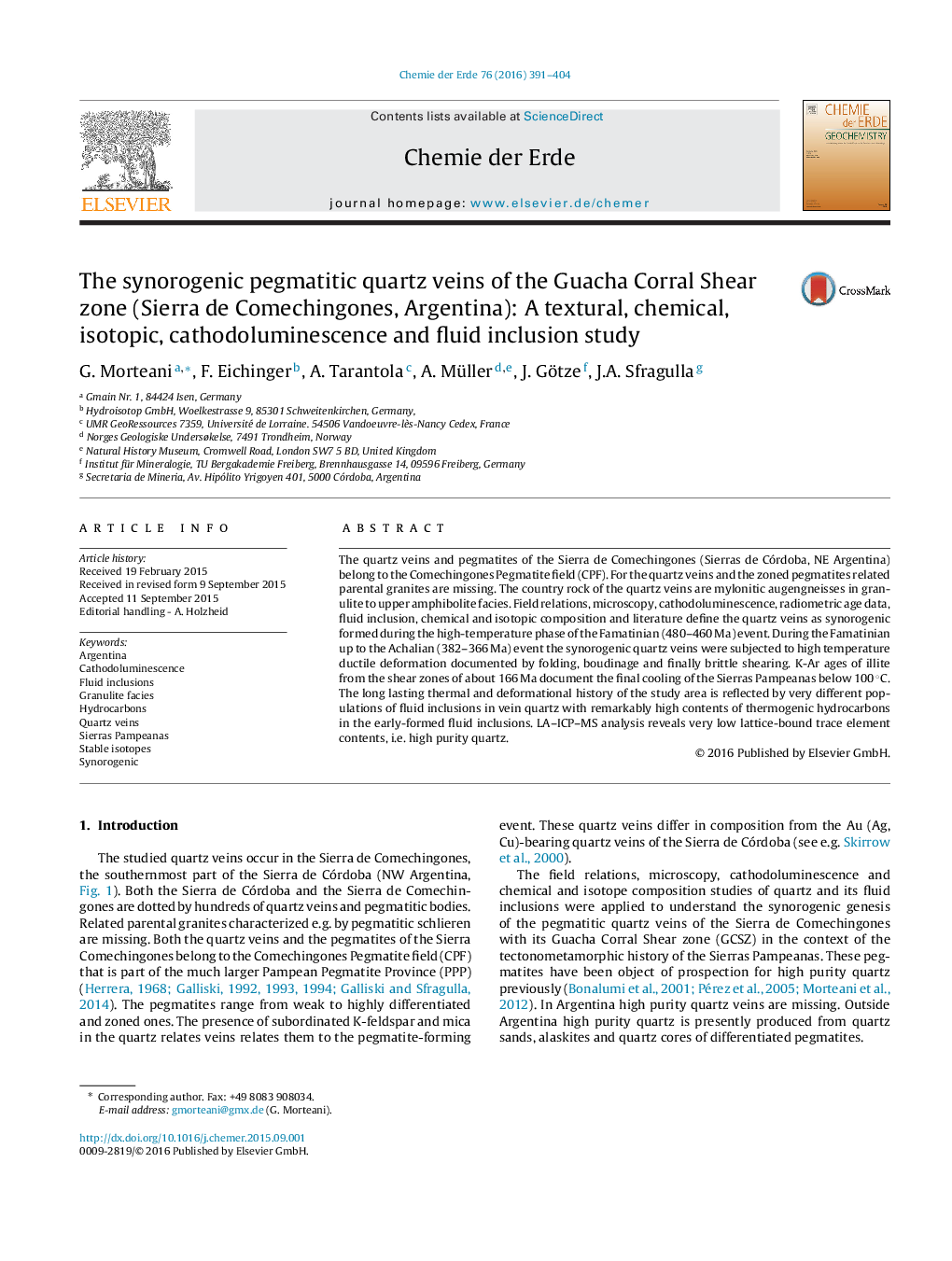| کد مقاله | کد نشریه | سال انتشار | مقاله انگلیسی | نسخه تمام متن |
|---|---|---|---|---|
| 5745693 | 1412412 | 2016 | 14 صفحه PDF | دانلود رایگان |

The quartz veins and pegmatites of the Sierra de Comechingones (Sierras de Córdoba, NE Argentina) belong to the Comechingones Pegmatite field (CPF). For the quartz veins and the zoned pegmatites related parental granites are missing. The country rock of the quartz veins are mylonitic augengneisses in granulite to upper amphibolite facies. Field relations, microscopy, cathodoluminescence, radiometric age data, fluid inclusion, chemical and isotopic composition and literature define the quartz veins as synorogenic formed during the high-temperature phase of the Famatinian (480-460 Ma) event. During the Famatinian up to the Achalian (382-366 Ma) event the synorogenic quartz veins were subjected to high temperature ductile deformation documented by folding, boudinage and finally brittle shearing. K-Ar ages of illite from the shear zones of about 166 Ma document the final cooling of the Sierras Pampeanas below 100 °C. The long lasting thermal and deformational history of the study area is reflected by very different populations of fluid inclusions in vein quartz with remarkably high contents of thermogenic hydrocarbons in the early-formed fluid inclusions. LA-ICP-MS analysis reveals very low lattice-bound trace element contents, i.e. high purity quartz.
Journal: Chemie der Erde - Geochemistry - Volume 76, Issue 3, October 2016, Pages 391-404